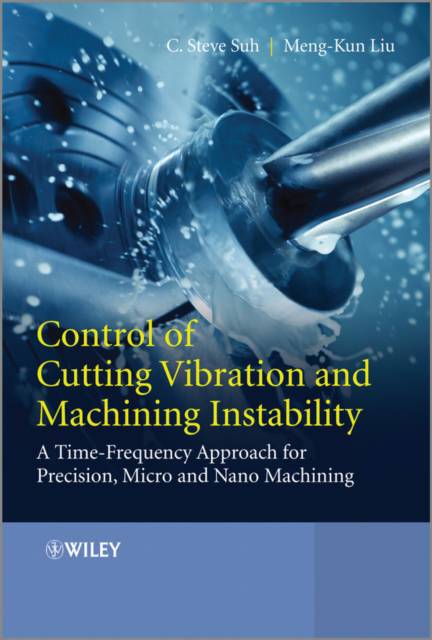
- Afhalen na 1 uur in een winkel met voorraad
- Gratis thuislevering in België vanaf € 30
- Ruim aanbod met 7 miljoen producten
- Afhalen na 1 uur in een winkel met voorraad
- Gratis thuislevering in België vanaf € 30
- Ruim aanbod met 7 miljoen producten
Control of Cutting Vibration and Machining Instability
A Time-Frequency Approach for Precision, Micro and Nano Machining
C Steve Suh, Meng-Kun LiuOmschrijving
Presents new developments on machine tool vibration control based on discontinuous dynamical systems
Machining instability is a topical area, and there are a wide range of publications that cover the topic. However, many of these previous studies have started by assuming that the behavior of the system can be linearised. Meanwhile, there are many recent advances in the fields of signal processing, nonlinear dynamics, and nonlinear control, all of which are relevant to the machining stability problem. This book establishes the fundamentals of cutting mechanics and machine tool dynamics in the simultaneous time-frequency domain. The new nonlinear control theory developed by the authors that facilitates simultaneous control of vibration amplitude in the time-domain and spectral response in the frequency-domain provides the foundation for the development of a controller architecture universally viable for the control of dynamic instability including bifurcation and chaos. Once parameters underlying the coupling, interaction, and evolution of different cutting states and between the tool and workpiece are established, they can then be incorporated into the architecture to create a control methodology that mitigate machining instability and enable robust, chatter-free machine tool design applicable in particular to high speed micro- and nano-machining.
- Presents new developments on machine tool vibration control based on discontinuous dynamical systems
- Provides a clear and concise approach to the understanding and control of machine tool and workpiece vibrations from an alternative view, contributing to an in-depth understanding of cutting dynamics and robust control of machining instability
- Equips the reader with the knowledge to understand the dynamics of cutting and operation of machine-tool systems in different conditions as well as the concept of cutting instability control
- Includes data examples in MATLAB coding
Specificaties
Betrokkenen
- Auteur(s):
- Uitgeverij:
Inhoud
- Aantal bladzijden:
- 260
- Taal:
- Engels
Eigenschappen
- Productcode (EAN):
- 9781118371824
- Verschijningsdatum:
- 7/10/2013
- Uitvoering:
- Hardcover
- Formaat:
- Genaaid
- Afmetingen:
- 173 mm x 246 mm
- Gewicht:
- 557 g

Alleen bij Standaard Boekhandel
Beoordelingen
We publiceren alleen reviews die voldoen aan de voorwaarden voor reviews. Bekijk onze voorwaarden voor reviews.












